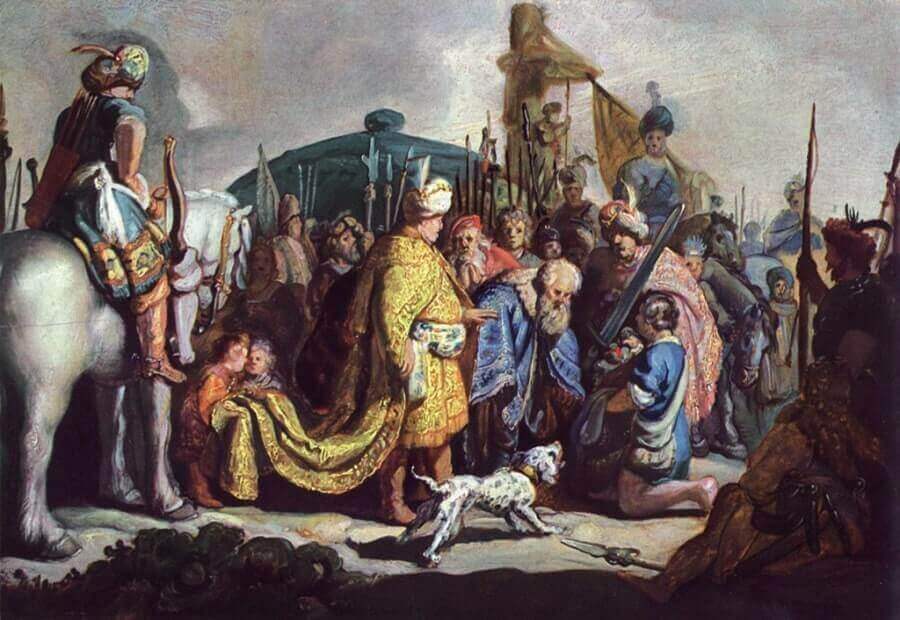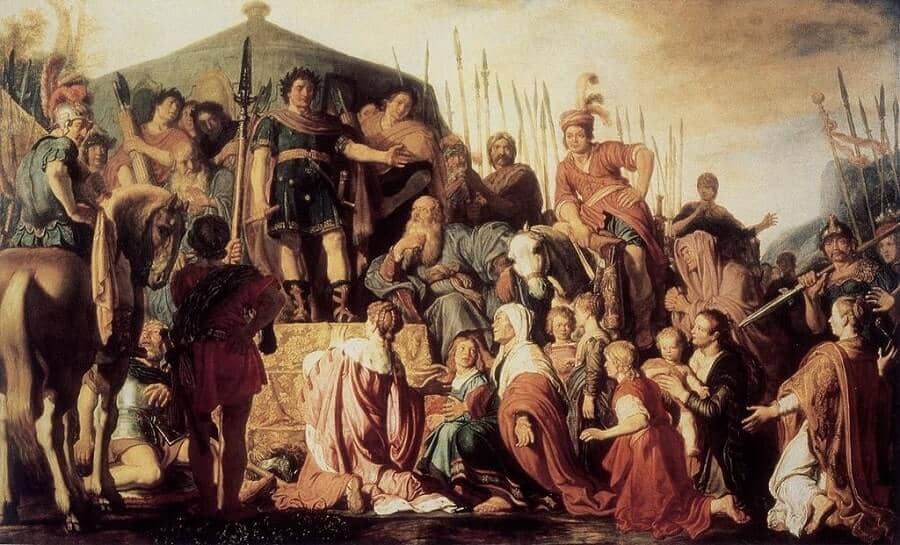David with the Head of Goliath before Saul, 1627 by Rembrandt

The confrontation of youth and old age is a recurrent theme of the young Rembrandt, and thereafter. In one of his earliest paintings, David with the Head of Goliath to Saul of 1627, the young David kneels before Saul, presenting him with the head of the legendary Philistine whom he has slain in battle. A new subject to painting when Rembrandt treated it, the picture derives its figure grouping and background tent from Lastman's Coriolanus and the Roman Women of 1625 and its regal procession, with Saul and his train-bearers, from an Adoration of the Magi by Peter Paul Rubens. But its drama and originality rest with the contrast between the pompous king and looming soldier on horseback at the left, who personify the reigning might, and the meek and barefooted shepherd boy David bearing his trophy, who will supersede them.

A comparable contrast of power and potential is likewise the subject of David Playing the Harp before Saul of 1629-30, which is inspired by an engraving of the same theme by Lucas van Leyden of 1508. In this, the menacing and melancholic figure of Saul, whose clenched fist forms the fulcrum of the composition, is temporarily soothed by the shadowy youth and ancestor of Christ whose deftly plucking fingers foretell the future.




















